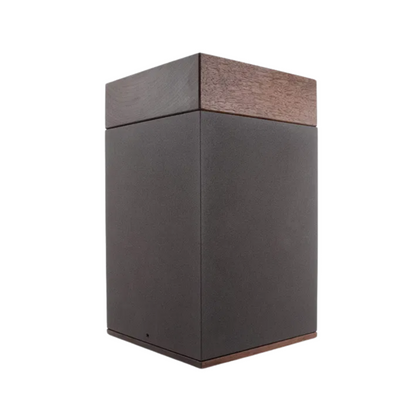

Scattering cremation ashes can be a beautiful, meaningful farewell—but respecting legal boundaries is essential. This 2025 guide should empower you to plan memorials with confidence and care.
Scattering ashes is a deeply personal and meaningful way to honor a loved one. Yet this simple act is governed by a patchwork of laws—state, local, and federal—that families must navigate. This guide breaks down U.S. scattering regulations in 2025, helping families and funeral professionals ensure that memorial wishes are carried out legally and respectfully.
1. Federal Rules You Can’t Overlook
When Scattering Ashes at Sea
The Clean Water Act mandates ashes be scattered at least 3 nautical miles offshore; biodegradable urns are required, and the EPA must be notified within 30 days of the scattering.
Aerial Scattering
Federal aviation law prohibits “objects” being dropped from aircraft that could harm people or property. Cremated remains are allowed, but urns and containers must be removed.
2. State-by-State Breakdown
Most states place scattering oversight on private property (with permission) and public lands (with permits), but specifics vary:
No State-Level Regulation
States such as AL, AK, CT, DE, FL, GA, HI, ID, IL, etc., have no statewide ash scattering laws , allowing scattering on private property (with owner permission) and public spaces (with permission)
Require Written Permission for Public Lands
In CA, IN, KY, NJ, NY , and others, written approval is required from public property owners; private land scattering is allowed with owner's permission.
Permit Requirements
California : Permit needed for scattering outside cemeteries; water restrictions include 500 yards from shore unless in a scattering garden.
Oregon & Washington : Some waterways require permits from Department of Ecology.
Nevada & Utah : Scattering on public land (e.g. BLM areas) may require notification or permits .
3. National & Federal Lands
National Parks
Most parks allow ash scattering, but only with a special-use permit, often requiring 30-day advance notice, limits on group size, and scattering in secluded areas away from trails and visitors.
Federal Lands (Forests, BLM)
Permits or permission may be required—check with local ranger or land manager. Private and remote lands are generally more flexible .
4. Water Scattering: Rivers, Lakes & Seas
Inland waterways may require state waterway permits , similar to sea rules.
Scattering gardens —common in cemeteries—do not need permits and are an easy option.
5. Practical Steps to Ensure Compliance
1. Confirm State Law
In most states, private land scattering requires landowner permission ; public land requires agency approval .
For water or aircraft scattering, follow federal laws .
Best resource: state funeral or health department websites .
2. Check Local Regulations
Local counties or cities may add extra restrictions—even where states are silent. .
3. If Scattering in Public Spaces
Secure written approval from land management or local government.
Request special-use permits when scattering in national parks or federal lands.
4. Use the Right Urn
For sea and water, urns must be biodegradable or the container must be removed.
For air scattering, ashes should be removed from containers before release.
5. Notify Authorities
EPA must be informed within 30 days for sea scattering under Clean Water Act.
6. FAQs
Q: Can you scatter at home or in a backyard?
Yes—if you own the land. You’ll need permission if it’s someone else’s.
Q: What about staging a scattering at sea?
Allowed with biodegradable urns, at least 3 nautical miles offshore, and notification filed with EPA.
Q: How do I scatter in a national park?
Apply for a special-use permit from park management, prepare to wait (~30 days), and follow guidelines (small group, secluded area).
Q: Are biodegradable urns mandatory?
Required for waterways; strongly encouraged in other settings for environmental reasons.
7. State Summary Table
| State Group | Private Land | Public Land | Water Scattering | Parks / Federal Lands |
|---|---|---|---|---|
| Most States | OK with permission | Permit required | Follows federal rules | Check with agencies |
| CA & similar | Permit (written) | Approval needed | Permit & distance rules | Special-use permit |
| NV, UT, OR, WA | OK w/approval | Notification/permit | Federal and state rules | Park permits required |
8. Tips for Families & Funeral Professionals
Be proactive : Verify rules well before the planned scattering date.
Use biodegradable scattering urns —they show respect for the environment.
-
Attach internal links to resources:
Example: “Consider our eco-friendly biodegradable urns, ideal for scattering ceremonies.”
Example: “Learn about scattering-friendly urn vases here.”
Template note : We recommend providing families with a worksheet listing state officials, permit offices, and EPA notification steps.
9. When to Seek Professional Assistance
Funeral homes, planners, or scattering services can relieve families of legal burden:
File special-use permits for parks or federal lands
Liaise with agencies for waterway permits
Offer portable scattering urns and guidance
10. Final Thoughts
Navigating the legal landscape of cremation scattering in the U.S. can feel daunting, but with careful preparation and clear guidance, families and funeral professionals can conduct meaningful ceremonies with confidence. By 2025, the legal framework across federal, state, and local jurisdictions remains a mix of specific mandates and open-minded allowances—provided that respect for environment, permission, and paperwork remains front and center.
At the federal level, the Environmental Protection Agency enforces clear rules for scattering at sea. Ceremonies must occur at minimum three nautical miles offshore, use biodegradable urns or have containers removed, and require notification to the EPA within 30 days under the Marine Protection, Research and Sanctuaries Act. Failure to follow these federal mandates could result in fines or legal complications, so staying informed is crucial.
Meanwhile, state regulations are much more variable. The majority of states—Colorado, Illinois, Utah, and many others—permit scattering on private property with the owner's approval, and often allow public land ceremonies with agency permits. Others, like California, require written permissions for public spaces and may impose distance-from-water restrictions. States such as Indiana, Maine, and Kentucky impose notification or permit requirements even on private land. For beloved national parks such as Rocky Mountain, special-use permits are mandatory, with rules around solitude, distance from trails and water, and no permanent markers.
Inland waterways blur the lines between federal and state enforcement: while federal rules don’t apply, individual states often treat rivers and lakes like public lands, requiring permission or permits for scattering—for example, in states like Michigan or California.
Local jurisdictions—counties and municipalities—sometimes layer additional regulations on top of state law. A city may prohibit ceremonies in public parks, or require events to be scheduled ahead—another reason why start-to-finish legal planning is essential.
So, what should families and professionals do?
Always start local. Identify the exact location, then confirm whether it’s private land (get written consent), public spaces (state or park permits), or marine territory (follow EPA rules).
Use biodegradable urns when scattering in waterways or oceans, or remove ashes from containers beforehand.
Complete required notifications—such as the EPA burial-at-sea form within 30 days.
Plan early for any permit turnaround times—especially with national parks.
Provide workflow tools—for funeral homes and planners, worksheets listing local authorities, links to forms, and what urn types comply can simplify the process.
When families follow these steps—asking permission, keeping services tasteful, and respecting both land and law—they create ceremonies that are legally sound and profoundly touching. Tools like Oaktree’s eco-friendly biodegradable urns and scattering guides support legal compliance and deliver peace of mind.
By combining legal diligence with thoughtful ceremony planning, scattering ashes can become a beautiful moment of closure—safe, respectful, and lasting. As state regulations evolve, staying informed ensures that final tributes honor loved ones and the environment responsibly.
FAQs
What are the shipping options for my memorial?
Oaktree offers free nationwide shipping on all urns and cremation jewelry items, with delivery typically taking 2-5 business days, including processing time. Need it sooner? Expedited shipping (overnight or 2-day) is available at checkout for an additional cost, and we will also prioritize processing for faster delivery. If you need international shipping, please contact us first to confirm availability and rates.
How long will it take for my engraved item to arrive?
Engraved urns and cremation necklaces require an additional 1-3 business days for personalization before shipping. If you need faster delivery, please contact us—we’ll do our best to expedite processing and accommodate your timeline. Expedited shipping options are also available at checkout to ensure your memorial arrives as soon as possible.
What do I do if I never received my order?
If your order hasn’t arrived within 10 business days, please contact us so we can track your shipment and resolve any issues. We’ll ensure your memorial reaches you as soon as possible.
What do I do if I received a defective order?
If your order arrives damaged or defective, contact us right away. We take pride in our high-quality craftsmanship and will work quickly to replace or repair your item at no additional cost.
Can I return my urn or cremation necklace? What is your return policy?
Oaktree offers a 100-day return and exchange policy for non-engraved items. Due to personalization, engraved urns are final sale and cannot be returned. For full details on how to start a return or exchange, visit our Returns & Exchanges page.
How do I make changes to an urn I’ve already ordered?
If you need to modify an order, contact us as soon as possible. If your urn is already engraved, we may not be able to make changes, but we’ll do our best to accommodate your request before processing.
How are your urns made? Where do the materials come from?
Oaktree’s urns are handcrafted in the USA and Europe using sustainable, locally sourced materials. Our artisans ensure each piece is beautifully designed and built to honor your loved one’s memory with care.
How do I choose the right urn size?
Each product page includes detailed dimensions, weight capacity, and cubic inches to help you select the right urn. As a general guide, 1 cubic inch holds 1 pound of pre-cremation weight. If you need help choosing, feel free to contact us.
Some urns are marked as “sold out.” When will they be available?
Our handmade urns may take a few weeks to restock. If you’re interested in a specific style, contact us for an estimated restock date, and we’ll notify you when it’s available.
Does Oaktree place the ashes into my urn?
Yes, we offer an optional ash transfer service for an additional fee. If you’d like us to handle this process, please contact us when placing your order. You’ll need to mail the ashes to us, and we’ll carefully transfer them into your selected urn.
How do I transfer ashes into my urn?
Cremated remains typically arrive in a sealed plastic bag inside a plastic container. To transfer them, simply place the sealed bag inside your urn. If needed, use a funnel for precise placement. If you have any concerns, our team is happy to assist.
How do I order an engraved urn?
To personalize your urn, select “Yes” under “Would you like your item engraved?” on the product page. If you’d like a custom design beyond standard engraving, contact us and we’ll explore options to create a unique tribute.
Can my urn be shipped directly to a funeral home?
Yes! During checkout, you can enter the funeral home’s address for direct shipping.
Can I customize my urn beyond engraving?
Yes! In addition to engraving, we offer custom design services, including unique finishes, symbols, or artwork. If you’d like to personalize your urn beyond standard options, contact us to discuss customization possibilities.
What materials are Oaktree urns made from?
Our urns are crafted from premium materials such as wood, ceramic, marble, metal, and biodegradable materials. We focus on sustainable sourcing and high-quality craftsmanship to create lasting memorials.
Do you offer keepsake urns or mini urns?
Yes, we offer keepsake urns and mini urns, which are smaller versions designed for sharing ashes among family members or keeping a small portion as a personal tribute.
Can I pre-order an urn for future use?
Absolutely! Many customers choose to pre-order an urn in advance. This ensures availability and allows for customization without time constraints. Contact us to arrange a pre-order.
Do you offer pet urns?
Yes, we provide a range of pet memorial urns designed to honor beloved pets. These are available in different materials and sizes to suit dogs, cats, and other pets.
How do I clean and maintain my urn?
Urns require gentle care to maintain their beauty. Use a soft cloth and mild cleaner for metal or ceramic urns. Avoid direct sunlight and moisture to preserve wood urns. Contact us for specific care instructions based on your urn’s material.
Can I travel with an urn? Are they TSA-approved?
Most Oaktree urns are TSA-compliant, making them safe for air travel. Choose a non-metal urn to ensure easy screening. We recommend carrying the urn in your carry-on bag and bringing the cremation certificate from the funeral home.
How do I track my order?
Once your order ships, we’ll send you a tracking number via email. You can use this to monitor the shipment status. If you don’t receive tracking details, contact us for assistance.
How do I contact Oaktree if my question isn’t answered here?
We’re happy to assist! Visit our Contact Us page to reach us via email, chat, or phone. Our compassionate team is ready to help.








